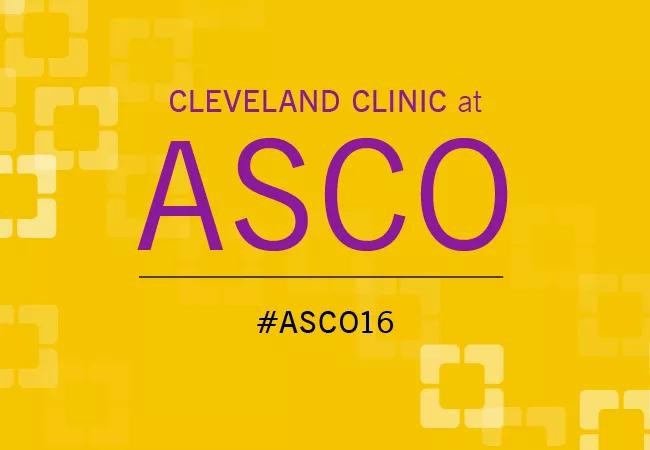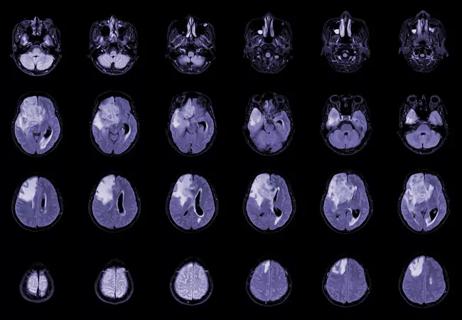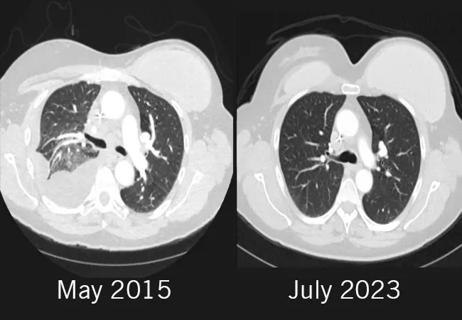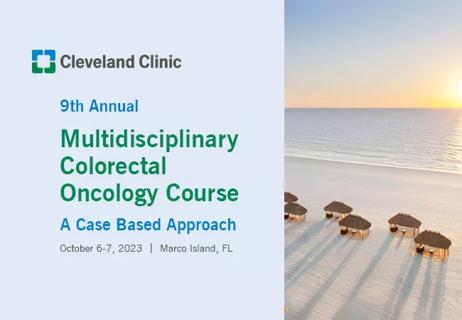Immune and genetic biomarkers predict response rates

New data on genetic predictors of response to atezolizumab, as assessed in the phase 2 multinational IMvigor trial, were presented at a June 5, 2016, session of the American Society of Clinical Oncology (ASCO) Annual Meeting in Chicago. In the study, researchers found that locally advanced and metastatic urothelial cancer patients who responded to atezolizumab were more likely to have several independent predictors of response, according to co-author Petros Grivas, MD, PhD, a medical oncologist in the Department of Hematology and Medical Oncology at Cleveland Clinic Taussig Cancer Institute.
Cleveland Clinic is a non-profit academic medical center. Advertising on our site helps support our mission. We do not endorse non-Cleveland Clinic products or services. Policy
The positive phase 2 IMvigor trial results were crucial to the recent FDA approval of atezolizumab (in May) for locally advanced and metastatic urothelial cancer patients. Translational studies — such as the results presented at ASCO — can help to advance the understanding of differences in patient response.
“This abstract focuses on those biomarkers that might aid in better patient selection for atezolizumab treatment in the future,” says Dr. Grivas. “Eventually this data on the several biomarkers of response, if validated, could be used to develop predictive models that can help aid physicians in selecting the right patients for these treatments.”
The phase 2 IMvigor trial results showed a significant objective response rate (26 percent) to atezolizumab among patients who expressed high levels of the target protein PD-L1 in immune-infiltrating cells. This response rate compared favorably to the objective response rate of approximately 10 percent among those who expressed lower levels of PD-L1, according to the study’s publication in The Lancet.
“These response rates are also very favorable compared to historical controls (with typical response rates of approximately 10 percent). The medication also was well tolerated overall and had a favorable toxicity profile, especially when compared to cytotoxic chemotherapy,” says Dr. Grivas, who was one of the investigators in the phase 2 IMvigor trial, conducted at 70 centers in Europe and North America. He also has provided paid consulting with Genentech.
Biomarkers of clinical benefit for immunotherapies need to be further systematically evaluated in urothelial cancer patients treated with immune checkpoint inhibitors, according to Dr. Grivas and fellow researchers. In exploratory analyses of tumor samples from a cohort of the IMvigor trial, the researchers found that PD-L1 expression, the molecular subtype and the mutational load in the patients’ tumors were all associated with response.
Specifically, higher level of PD-L1 expression in the membrane of immune infiltrating cells correlated with higher response rates compared to lower expression among urothelial cancer patients treated with atezolizumab.
Response to atezolizumab was more marked among those with higher CD8+ T effector gene expression levels, especially higher expression of CXCL9 (p=.0057) and CXCL10 (p=.0079), in their tumors.
“Higher expression of CD8+ T effector genes in the tumor microenvironment might indicate a pre-existing immune response,” Dr. Grivas says. “The CD8+ cells could have already infiltrated the tumor with the goal of killing cancer cells.”
In the study, Cancer Genome Atlas molecular subtype also correlated with response. Responses occurred in all subtypes, but objective response rates were significantly higher in luminal II samples (34 percent, p=.0017).
Mutational load in the patients’ tumors was also significantly increased in responders, who had a median mutational load of 12.4/Mb vs. non-responders (6.4/Mb; p<0.0001). Higher mutational load also correlated with improved progression-free survival (p=0.003) and overall survival (p=0.014).
“The higher mutational load was associated with improved response to atezolizumab and may be indicative of neoantigen formation,” Dr. Grivas says. “As a result, the immune system can be activated to a greater extent, and response rate and survival can be improved.”

Timing and type of side effects differ greatly from chemotherapy

Dedicated multidisciplinary teams support 84 ultra-rare cancers

Sessions explore treatment advances and multidisciplinary care

New research from Cleveland Clinic helps explain why these tumors are so refractory to treatment, and suggests new therapeutic avenues

Combination of olaparib and carboplatin results in complete durable response for a patient with BRCA2 and “BRCAness” mutations

Early communication between oncologists and ophthalmologist warranted

Case-based course delves into latest treatment approaches

Long-term relationship building and engagement key to gaining community trust